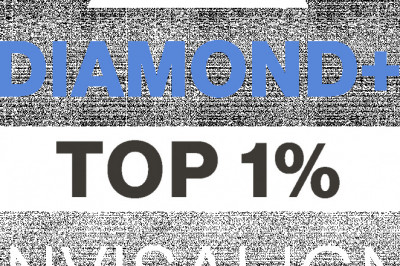views

If your personal finances entirely what it should be, you’re not alone. According to studies by Statistic Brain, roughly 40% of Americans are not saving for retirement, while 25% have no savings at all, and 38% wouldn’t have anything to fall back on in the case of a financial emergency.
Clearly, a sub-par financial education is leading to poor money decisions for many people in America.
“Bad money management” sounds nasty, and you probably don’t want anything to do with it. But it’s this exact feeling of confusion and discomfort that causes so many Americans to ignore personal finance, and lose control of their financial lives. Money isn’t something we typically like to talk about, let alone study or learn to understand.
However, there is hope for your financial future — and you don’t have to spend hours every week working with your personal finances to have it. With some tried-and-true strategies and the right financial systems, you can set up your money to organize itself on your behalf, while you focus on the parts of your life that you actually care about.
The instructions in this article can be the light at the end of the tunnel for your personal finances. Instead of trundling onward, hoping everything works out in the end, you can march forward with confidence because the match checks out. The first thing we’ll do is create your budget.
The Importance of Budgeting

The first thing you must do to take control of your personal finances is to set up a budget.
Budgeting gets a bad rap in the world of personal finance. Some people feel that it’s the system that keeps them from having any fun by dictating where their money should go. Many people assume budgeting isn’t necessary, and let it go at that.
You may not need a super-detailed or complex budget but trust us: you do need one. And it doesn’t have to take the fun out of life, either.
Without some form of budget, it’s impossible to see your full personal finance condition with clarity or accuracy. Without one, you’re taking shots in the dark with your money, hoping your spending is on track and that there will be money for rent by the end of the month. With a basic budget in place, you’ll always know how much you have to spend without going over the limit. Besides putting you in control of your finances, this also gives you peace of mind, since you’ll always know there’s enough money set back for what you need.
Setting up a budget may be the first step to organizing your personal finances, but understanding your expenses is the first step to budgeting. That’s what we’ll discuss next.
Understanding Your Expenses
If you walk up to someone at random and ask them how much money they spend in a given month, they probably won’t be able to tell you. Needless to say, this is not good personal finance planning.
Too many people have no idea how much they spend every month. They tend to overestimate how much money they have in the bank, spend past their limit, and fall back on their credit card for bills by the month’s end.
If you’ve been one of these people before, you aren’t going to be one after today.
If you never use cash, discovering your expenses is easy: just look back through your credit and debit card transaction history, and add up all recurring expenses. These include regular grocery shopping, bills for utilities and services, and occasional expenses for things like clothes and car repairs.
Some of these expenses will change from month to month: on some months you probably don’t spend any money at all on car repairs, but then once or twice a year you may spend a few hundred dollars. For these expenses, add up all the money you spend over the course of six months to a year, then divide the total amount by that number of months. The answer will be the approximate amount of money you should plan to have available for that expense monthly.
If you often pay using cash and you don’t have receipts to check your transaction history with, then starting today you’ll need to begin tracking your spending. This may sound daunting, but it’s really quite simple: just begin saving your receipts every time you make a purchase. Save digital receipts and order confirmations to a special folder on your computer, and save paper receipts in an envelope. Make sure you store these where you’ll know to find them later.
Once you’ve been able to track your spending for a few months or so, you can divide the money you spend into categories: rent, food, credit cards, subscription services, etc. These final numbers will add up to the amount you should be prepared to spend every month, unless you decide to cut your spending.
Next, we’ll discuss the opposite of expenses: your income.
Understanding Your Income

This step is considerably simpler than deciphering your expenses because all you have to do is look at your weekly or monthly paycheck. You probably already know how much you make per month.
Once you’ve added up your monthly income (or double-checked, if you know it off the top of your head), compare this figure to the amount of money you’re spending. Are you spending more per month than you’re making? Or are you spending less?
If your average monthly expenses are lower than your monthly income, congratulations! You’re already in good shape, and the rest of the steps in this article can continue to make that better.
On the other hand, if you find you’ve been overspending most months, you have a little more work to do. You’ll have to either get a raise, or reduce your spending until you bring the difference between the two figures down to zero.
Before we discuss ways to decrease your spending, hopefully without compromising your enjoyment of life, let’s take a break to talk about debt.
Considering Debt Relief
Absolutely no one likes debt, but somehow almost all of us end up with a lot of it. In 2013, research by the Federal Reserve indicated that American consumers owed roughly $11.1 trillion dollars in debt, split between mortgages, credit cards, and student loans.
If you’re like the majority of Americans, you’re probably struggling at least a little with debt of your own. Fortunately, the solution to find debt relief isn’t usually too complicated once you start paying attention to the problem.
First of all, bring to mind the different debts you have. How many credit cards do you possess? Gather them all into one place. Do you have a mortgage, car payment, or student loan? Find out what
you owe to your various creditors. Write down every debt you have, along with how much you’re paying per month on each.
Your options here are somewhat varied. If your debt doesn’t add up to that much (say, less than $10,000), you may choose to simply leave it alone, and pay it off over time. It would be a good idea to pay a little extra every month so you can get rid of your debt sooner (especially if you’ve been paying the minimum payments on your credit cards).
If you have more debt than you know how to deal with, a debt consolidation or management program may be right for you. Get in touch with a nearby consumer credit counseling organization, who can advise you and set up a debt management program if you’re eligible. Many banks and other institutions offer debt consolidation, where they bring all of your debts onto a single low-interest account. You will need to think carefully about your choices from here, weighing the pros and cons of each option.
Anyway, now that you have a snapshot of your debt situation, let’s get back to budgeting. Next, we’re going to talk about how you can bring down your monthly expenses.
https://personalfinancearticle.net/











